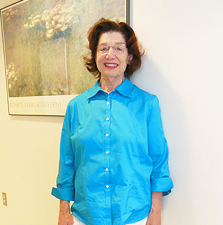Post-Bariatric Body Contouring
Patients who have undergone bariatric surgery often find they have "deflated" skin in many areas of their body including the face, arms, breasts, abdomen, and thighs, particularly in those who have lost more than 100 lbs.
Impact of Bariatric Surgery
Surgery that restricts food to the stomach can have several undesirable effects. One is loose, hanging skin throughout the body. Because previous weight, often hundreds of pounds, have stretched the patient's skin to the maximum, it has lost its elasticity, i.e., the ability to spring back. Instead, the newly slimmed-down patient confronts layers of extra hanging skin including an overhanging panniculus, a large apron of skin hanging from the stomach that can cover the pubis and groin areas.
Extra inches and sometimes feet of floppy skin may hang from the upper arms, chest, stomach, upper thighs and buttocks. These rolls and sheets of skin can rub against each other, creating areas of irritation and difficulties with hygiene. They may also make exercise difficult.
Among the areas most affected are:
- Upper arms may sag and appear loose and full
- Breasts may flatten and hang with nipples pointed downward
- Abdominal area may extend around the sides and into the lower back area, resulting in an apron-like overhang
- Buttocks, groin and thighs can sag and cause hanging pockets of skin
How Body Contouring Plastic Surgery Works
Body contouring following massive weight loss are procedures performed by plastic surgeons to eliminate and/or reduce excess post-bariatric surgery. Body contouring improves the shape and tone of underlying tissue and removes excess sagging fat and skin, resulting in smoother body contours and a normal appearance.
While body contouring can be done in a single session, it is usually performed in stages under general anesthesia. If the patient has a history of smoking, deep venous thrombosis or clotting disorders, a high BMI or other risk factors, additional precautions will be required.
The following are examples of common body contouring procedures:
- Arm lift or brachioplasty. The extra flesh on the arms of bariatric patients virtually always appears on the underside of the upper arm and is sometimes referred to as "bat wings". Surgeons make incisions made from the armpit to the elbow to remove the skin and create a more pleasing contour. Consequently, surgeons open the arm on its underside so that the resulting scar is fairly well hidden. A brachioplasty procedure can employ some liposuction after the incision is made. With the arm opened, the surgeon pulls the skin tight and then trims away the excess skin which, depending on the patient, can be a pound of skin per arm or more.
- Breast lift or mastopexy. By trimming excess tissue from the upper breast, the surgeon can move breasts which usually droop to the umbillicus to a more upright and full position. The procedure also often requires an implant to make up for lost fat and tissue inside the breast. Scars on women are almost always hidden inside the area covered by the bra.
- Stomach lift or abdominoplasty. Excess skin hanging down over the pubic region is often the distorting feature that most concerns and bothers patients. The stomach pannus retains moisture, and causes rashes due to skin rubbing against itself which usually leads to poor hygiene. While the surgical procedure to remove it is known as a panniculectomy, there is often more work to be done for patients who suffer from large amounts of hanging skin. To provide improved contours on the waist, back and flanks, surgeons sometimes perform a belt lipectomy, (also known as a torsoplasty or a circumferential lipectomy). The incision goes all the way around the patient's midsection at the level of the lower waist. The surgeon uses more liposuction on the stomach and flanks while trimming excess skin from the patient's back and sides as well. The abdominoplasty and belt lipectomy incisions are placed so that the resulting scar is hidden within most underwear and swimsuits.
- Lower body lift trims excess skin on the buttocks and thighs. For an inner thigh lift, the surgeon makes an incision high on the inner leg, starting near the groin and continuing down to the knee. Some fat may be removed with liposuction. The surgeon then removes excess skin and redrapes the remaining skin before closing the long incision, leaving the patient with tighter and more attractive thighs. The outer thigh and buttock can be lifted through a hip-to-hip incision across the back, above the buttocks.
Conclusion
Bariatric surgery typically achieves sustained decreases in body mass index (BMI). However, the remaining sagging skin serves as a reminder of the patient's previous obesity. Post-bariatric body contouring aims to correct this and restore a sense of normalcy. By reshaping the body to its ideal proportions, the success of weight loss surgery is fully realized.


